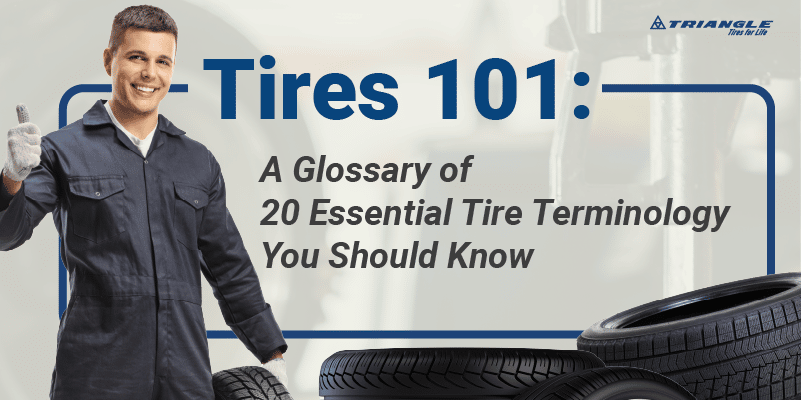
Wheels may look like one of the simplest parts of a vehicle. In reality, they’re intricate innovations that make land transportation possible. Wheels are even regarded as the hallmark of man’s innovation, with their origins going back to 4000 BC.
Tires affect virtually every aspect of driving, so it makes sense to be familiar with tire terminology whether you’re a first-time car owner or a driver for a logistics company.
Check the visual guide below for tire terms you’ll likely encounter as you use and maintain your vehicle over time.

Tires 101: A Glossary of 20 Essential Tire Terminology You Should Know
Drivers are responsible for knowing everything about their vehicles, including tires. Here are 20 tire terms you should know.
1. Air pressure
The amount of air inside a tire. Also called tire pressure, air pressure is usually measured in pounds per square inch (PSI), kilopascals (kPa), and barometric pressure (BAR). Keeping air pressure at the proper level extends your vehicle’s durability, enables a quicker steer response, and helps you save fuel.
Experts recommend checking your air pressure levels monthly to ensure proper tire inflation and car safety. Check your tires when they’re cold or not in use to get an accurate reading.
2. Alignment
It’s the process of adjusting a vehicle’s suspension system to ensure balance and longer driving range and tire life. Your car needs tire alignment when it has uneven tread wear or veers in certain directions, or your steering wheel is off-center, heavy on one side, or vibrating.
Even if you don’t experience these conditions, you should still get an alignment check every six months or 6,000 miles (or roughly 9,000 to 10,000 kilometers) to ensure your tires stay in optimal condition. The tire alignment cost varies per auto shop and car type, but it usually starts at around ₱1,500.
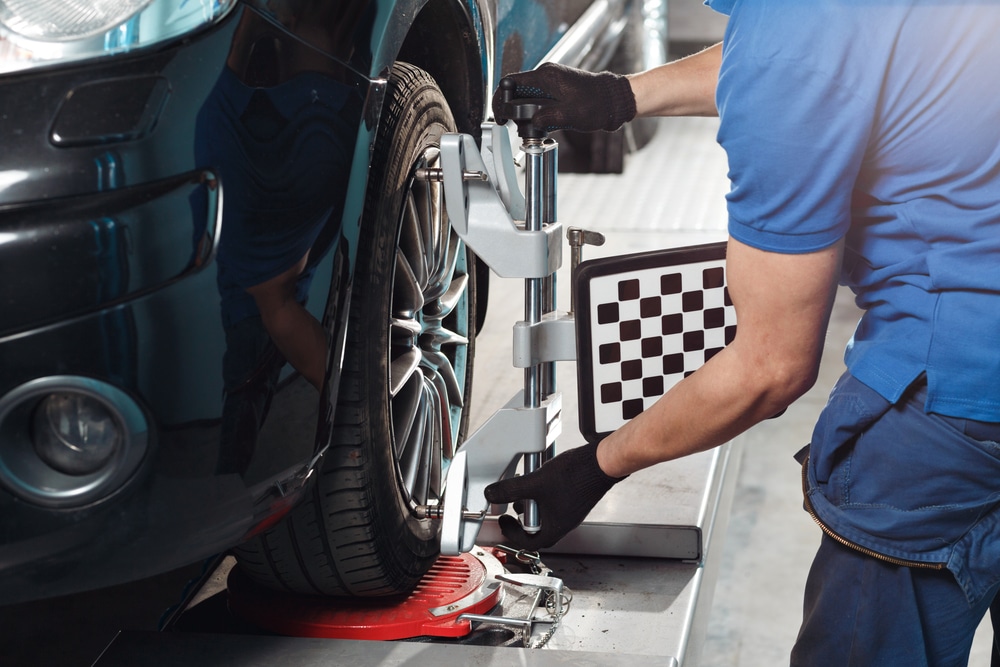
3. All-season or all-terrain tires
These tires perform well in any road condition, such as rough terrains and wet, slippery roads. They are versatile and durable, allowing drivers to easily drive through muddy roads and save on frequent tire replacements. These tires also have tread patterns and sipes or thinly cut slits that offer extra traction and grip.
4. DOT code
This code is a serial number indicating a tire’s size, manufacturing date and location, and manufacturer’s unique identifier. You’ll see it on the tire’s inside sidewall near the rim, telling you how old your tires are and when you should replace them.
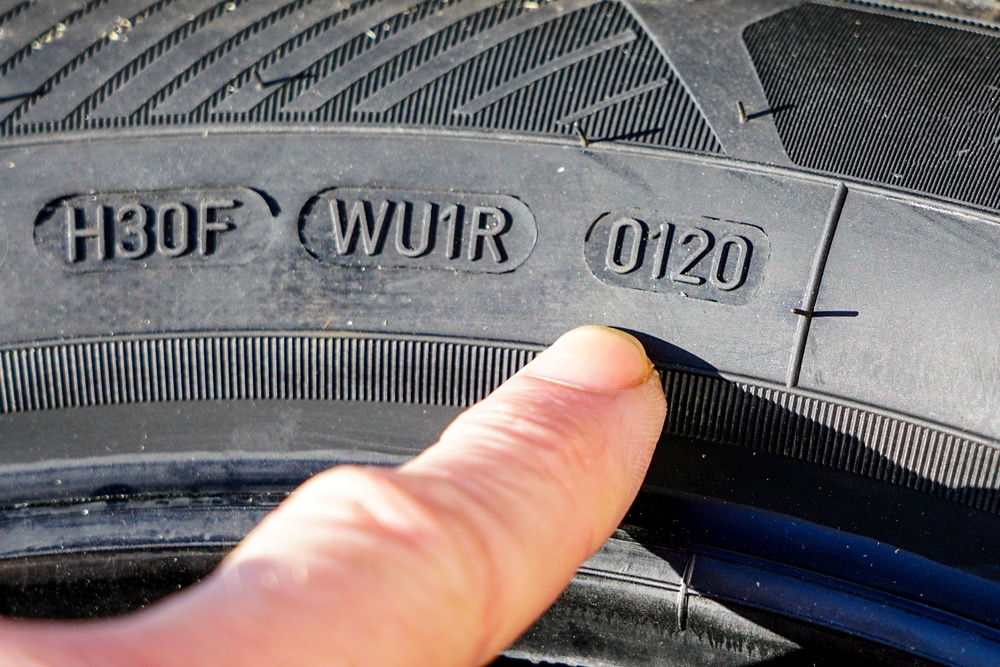
5. Hydroplaning
In this driving condition, the tires lose grip on a wet, slippery road, causing uncontrollable sliding and riding on water instead of the pavement. Also known as aquaplaning, hydroplaning occurs when your car starts feeling loose, veering left or right, slipping outside the bend, or skidding in a straight line.
Once your car starts hydroplaning, the most essential thing you can do is reduce your speed by 5 or 10 mph. This rate will still depend on the road’s type and quality, tires’ condition, and other driving factors. While it seems like the best course of action, be careful not to hit the brakes too hard, as it can cause your car to skid uncontrollably.
Additionally, you could turn your car toward the skid and wait for it to reconnect on the road’s surface. Ensure your tires are well-rotated, balanced, and maintained to prevent future hydroplaning instances and extend their lifespan.
If you’re driving in a region that experiences rain all year round, it’s best to have tires with high traction, especially on wet surfaces. Check out the 13 Best Tires for Slippery Roads During the Rainy Season for our recommendations.
6. Load-bearing or load-carrying capacity
This refers to the maximum weight a tire can carry under different driving conditions. Knowing the load-carrying capacity lets you know what type of tires are ideal for your vehicle. Getting the wrong tires can also lead to overloading, which then causes underinflation, compressed suspension, lost vehicle control, and tire blowout.
7. Penny or Piso test
A way to check a tire’s proper tread depth, the penny or Piso test also indicates whether you need to replace your tires immediately.
Conducting the test is easy. Insert a one-peso coin into the tire tread or groove with Jose Rizal’s head facing upright. Your tire tread is still in good condition if it partially covers the year below Rizal’s head. If not, it’s a sign that you should get new tires. The key is ensuring your tire treads won’t fall below 1.6 millimeters in depth.
8. Ply rating
This number indicates a tire’s load-carrying capacity when inflated to maximum air pressure. It may also refer to the number of plies or rubber layers encompassing a tire’s casing. The higher the ply rating, the stronger the tire.
Ply rating is often interchanged with load range. However, the former is expressed in numbers and the latter in letters. Ply rating also doesn’t necessarily indicate the number of plies. For instance, a tire with a 6-ply rating can mean it has one or two plies equivalent to the strength of six plies.
9. Pounds per square inch (PSI)
The standard unit of measurement for air pressure, the ideal PSI for car tires falls around 32 to 35 PSI. Meanwhile, bigger and heavier vehicles such as trucks and buses typically require air pressure of 116 to 131 PSI.
10. Rolling resistance
This pertains to the force needed to keep a tire moving at a consistent speed over a surface. The general rule is that a tire requires less energy and fuel if it has lower rolling resistance.
11. Rotation
Rotation involves moving tires from front to rear, side to side, or other patterns to improve their tread life, enhance vehicle performance, and adhere to warranty requirements. Rotating your tires also ensures your car engine runs smoothly and you achieve better fuel mileage. These results will allow you to save on fuel.
For perspective, out-of-balance tires can reduce fuel efficiency by about 31 cents per liter, incurring an additional ₱300 per ₱3,000 spent. Experts recommend rotating your tires every six months or 5,000 to 6,000 miles (or 9,000 to 10,000 kilometers). It would help to rotate your spare tires to expand the lifespan of your front and rear tires.
12. Sidewall
This is the side of a tire containing specifications such as its size, type, manufacturing date, manufacturer’s name, and more. It’s located on the outer surface of the tire, between the tire bead and the tread.
The sidewall further stabilizes and strengthens the tire when fitted with additional covering. It also protects the tire’s cord plies from debris.
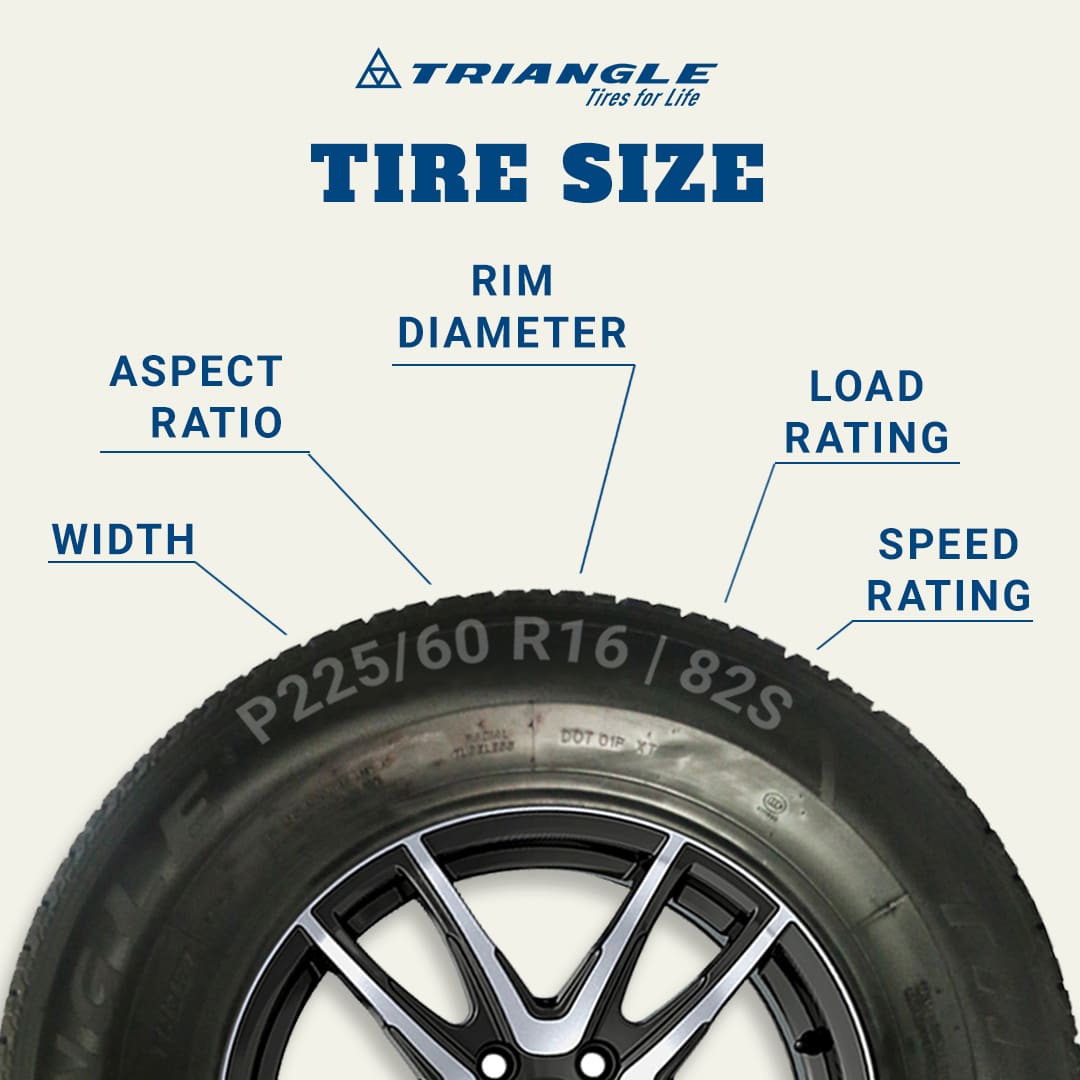
13. Speed rating
This alphanumeric code indicates a tire’s ability to travel at top speed safely. Controlled indoor laboratory testing is necessary to determine tire speed rating. The general rule for speed rating is that a tire can better manage heat and faster speeds with a higher alphabet rating. However, there are exceptions to this rule.
For instance, H-rated tires can travel at a speed of 210 km/h despite being placed early in the alphabet. The H rating is between the U and V ratings in the speed rating chart.
Triangle Tires’ TE301 tire has different speed ratings depending on its size. The 185/70R13 size has a T-speed rating, making it suitable for sedans. Meanwhile, the 215/70R15 size is ideal for SUVs and vans because it has an H speed rating.
14. Tire pressure monitoring system (TPMS)
TPMS is an automated safety system that monitors air pressure and alerts drivers when the pressure in one or more tires drops below 25% of the recommended air pressure. The slightest reduction in air pressure can underinflate and damage your tires. As such, you should check your air pressure weekly or every time you go for gas.
15. Tire size
This refers to the combination of numbers and letters indicating a tire’s width, sidewall height, and diameter.
For instance, Triangle Tires’ TR645 tire has a 185R14C tire size, which means it has a width of 185 millimeters and a diameter of 14 inches. The “R” before the wheel diameter stands for “radial tires,” the standard tire for passenger cars. The “C” at the end of the code indicates the tire is 8-ply and designed for commercial use.
16. Tread
This is the outer layer of a tire that comes into contact with the road. Different tires come with varying patterns of ribs, blocks, grooves, sipes, shoulders, and voids. For instance, Triangle Tires’ TR685 and TR656 tires have rib treads, while its TR918 and TR691 tires have lug treads.
Each tire tread pattern serves different purposes. However, all tire treads generally support a vehicle’s braking ability, cornering power, accelerations, and overall performance.

17. Tread wear indicator
You’ll see this small mark or band in the tread grooves, indicating a tire has worn out. You should change your tire if it has reached a 2/32″ tread depth, which is the hazard point for most wheels.
18. Uniform tire quality grade (UTQG)
This performance test measures a tire’s treadwear, traction, and temperature and helps drivers know which tires to purchase based on those three requirements.
For instance, testing a tire for UTQG Treadwear Grades involves running a vehicle on a prescribed test loop with its alignment set, air pressure checked, and tire rotated 1,200 kilometers. At the end of the test, the tire is measured against the monitoring tire and graded for relative treadwear. The higher the grade, the longer the tire tread would last.
19. Valve
This device lets air in and out of tires and is often used to inflate or deflate a tire. The valve comes with a cap, which prevents dirt and moisture from building up inside the tire.
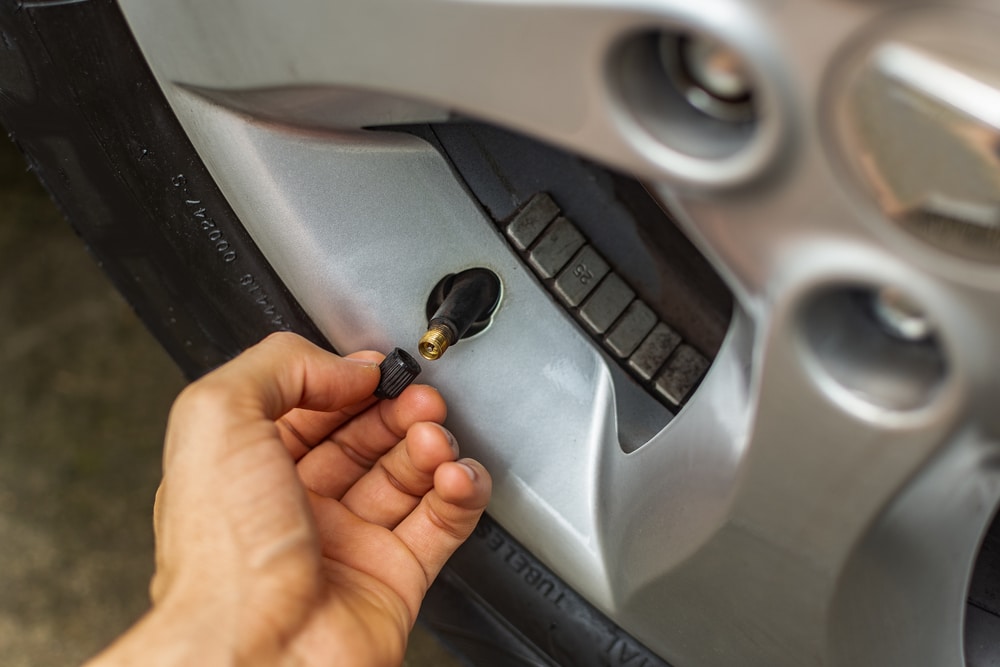
20. Vulcanization
This chemical process repairs tire cracks, tears, cuts, gashes, and punctures. Vulcanization can be section repair, spot repair, and stripping. The only downside to vulcanizing tires is that it takes the product out of warranty.
Get Quality Tires from the Experts
Regardless if you use your vehicle for personal or business purposes, you must take care of its core parts, including the tires. Learning about your wheels lets you know if they are in good condition or need replacement.
Look no further than Triangle Tires for quality tires. We have a wide array of tires for different vehicles—from passenger cars and light trucks to heavy equipment vehicles—available for delivery at an affordable price. Browse our tire catalog or contact us to learn how we can help you.